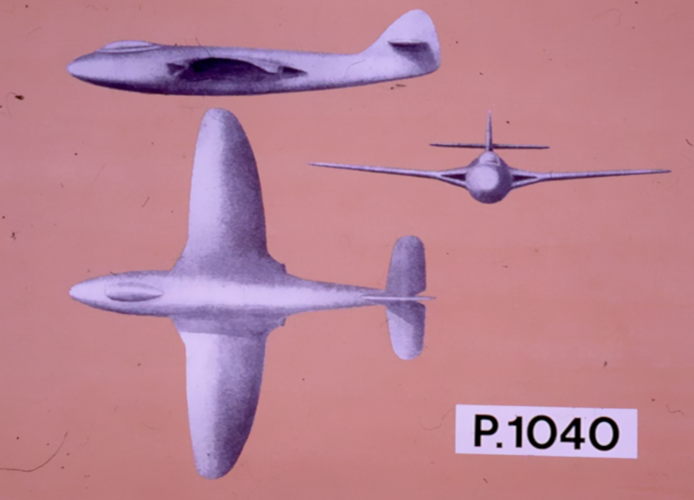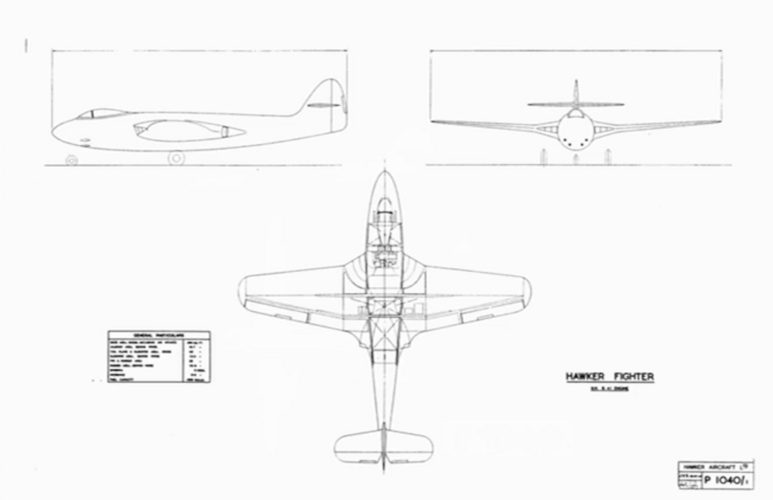- Joined
- 25 July 2007
- Messages
- 4,167
- Reaction score
- 3,835
Hawker P.1035 Hawk. Source grade 1.
I came across some unattributed notes and sketches of mine from long ago. The description of Hawker's P.1035 match those widely spread -- based on the F.2/43 Fury but B.41-powered with a long jet pipe and the Fury cockpit moved forward.
Questions
1 - Has anyone seen a drawing of the P.1035 with a higher source grade?
2 - Can anyone confirm the 'Hawk' name? (I also noted 'Jet Fury' but assume that to be a description rather than an appellation.)
3 - Is a tricycle landing gear a safe assumption or might the P.1035 have inherited the Fury u/c arrangement?
A scale modeller depicting the P.1035 retained the Fury gear. A variation with that gear is in the Scale Modelling, Fan Art & Profiles section.
I came across some unattributed notes and sketches of mine from long ago. The description of Hawker's P.1035 match those widely spread -- based on the F.2/43 Fury but B.41-powered with a long jet pipe and the Fury cockpit moved forward.
Questions
1 - Has anyone seen a drawing of the P.1035 with a higher source grade?
2 - Can anyone confirm the 'Hawk' name? (I also noted 'Jet Fury' but assume that to be a description rather than an appellation.)
3 - Is a tricycle landing gear a safe assumption or might the P.1035 have inherited the Fury u/c arrangement?
A scale modeller depicting the P.1035 retained the Fury gear. A variation with that gear is in the Scale Modelling, Fan Art & Profiles section.













